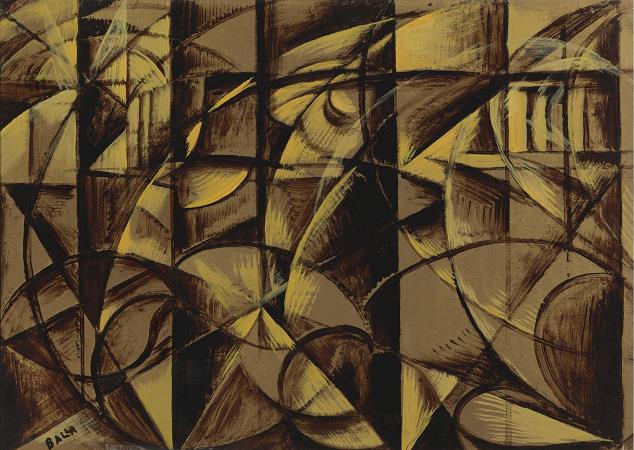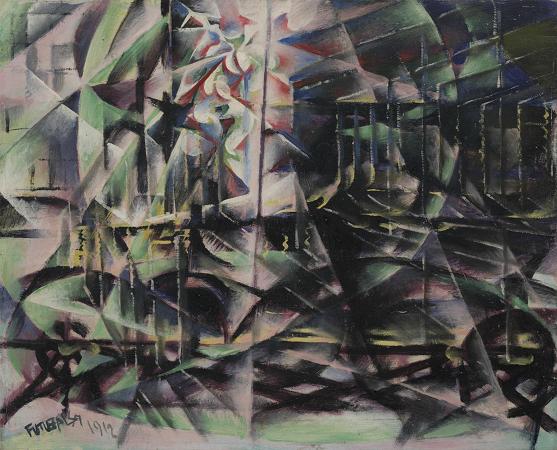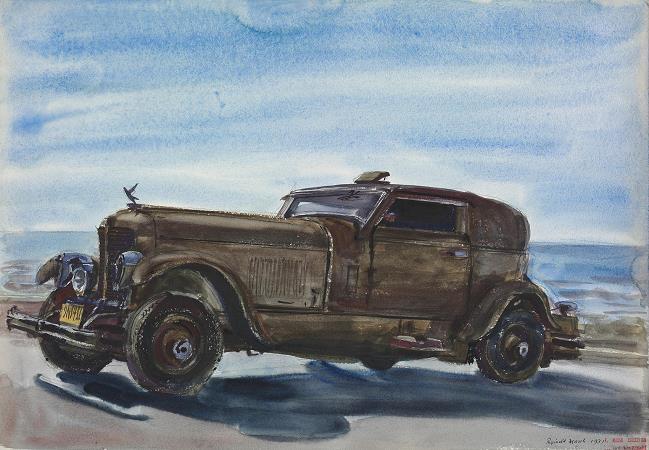Automobile. Development of the automobile started in 1672 with the invention of the first steam-powered vehicle, which led to the creation of the first steam-powered automobile capable of human transportation, built by Nicolas-Joseph Cugnot in 1769. Inventors began to branch out at the start of the 19th century, creating the de Rivaz engine, one of the first internal combustion engines, and an early electric motor. Samuel Brown later tested the first industrially applied internal combustion engine in 1826. Only 2 of these were made. Development was hindered in the mid-19th century by a backlash against large vehicles, yet progress continued on some internal combustion engines. The engine evolved as engineers created two-and four-cycle combustion engines and began using gasoline as fuel. The first modern car, a practical, marketable automobile for everyday use, and the first car put into series production appeared in 1886, when Carl Benz developed a gasoline-powered automobile and made several identical copies. Later automobile production was marked by the Ford Model T, created by the Ford Motor Company in 1908, which became the first automobile to be mass-produced on a moving assembly line. The early history of the automobile was concentrated on the search for a reliable portable power unit to propel the vehicle.mw-parser-output.hatnote{font-style:italic}.mw-parser-output div.hatnote{padding-left:1.6em;margin-bottom:0.5em}.mw-parser-output.hatnote i{font-style:normal}.mw-parser-output.hatnote+link+.hatnote{margin-top:-0.5em} Main article: History of steam road vehicles Cugnot's steam wagon, the second version Ferdinand Verbiest, a member of a Jesuit mission in China, built a steam-powered vehicle around 1672 as a toy for the Kangxi Emperor. It was small-scale and could not carry a driver but it was, quite possibly, the first working steam-powered vehicle. Steam-powered self-propelled vehicles large enough to transport people and cargo were first devised in the late 18th century. Nicolas-Joseph Cugnot demonstrated his fardier a vapeur, an experimental steam-driven artillery tractor, in 1770 and 1771. As Cugnot's design proved to be impractical, his invention was not developed in his native France. The center of innovation shifted to Great Britain. By 1784, William Murdoch had built a working model of a steam carriage in Redruth and in 1801 Richard Trevithick was running a full-sized vehicle on the roads in Camborne. During the 19th century, attempts were made to introduce steam-powered vehicles. Innovations such as hand brakes, multispeed transmissions and better steering developed. Some successful vehicles provided mass transit until a backlash against these large vehicles resulted in the passage of legislation such as the UK Locomotives Act 1865, which required many self-propelled vehicles on public roads to be preceded by a man on foot waving a red flag and blowing a horn. This effectively halted road auto development in the United Kingdom for most of the rest of the 19th century; inventors and engineers shifted their efforts to improvements in railway locomotives. The law was not repealed until 1896, although the need for the red flag was removed in 1878. In 1816, a professor at Prague Polytechnic, Josef Bozek, built an oil-fired steam car. Walter Hancock, builder and operator of London steam buses, in 1838 built a two-seated car phaeton. In 1867, Canadian jeweler Henry Seth Taylor demonstrated his four-wheeled steam buggy at the Stanstead Fair in Stanstead, Quebec and again the following year. The basis of the buggy, which he began building in 1865, was a high-wheeled carriage with bracing to support a two-cylinder steam engine mounted on the The first automobile suitable for use on existing wagon roads in the United States was a steam-powered vehicle invented in 1871 by Dr. J.W. Carhart, a minister of the Methodist Episcopal Church, in Racine, Wisconsin. They stipulated that the vehicle would have to maintain an average speed of more than 8 km/h over a 320 km course. The offer led to the first city to city automobile race in the United States, starting on 16 July 1878 in Green Bay, Wisconsin, and ending in Madison, Wisconsin, via Appleton, Oshkosh, Waupun, Watertown, Fort Atkinson, and Janesville. While seven vehicles were registered, only two started to compete: the entries from Green Bay and Oshkosh. The vehicle from Green Bay was faster but broke down before completing the race.
more...




